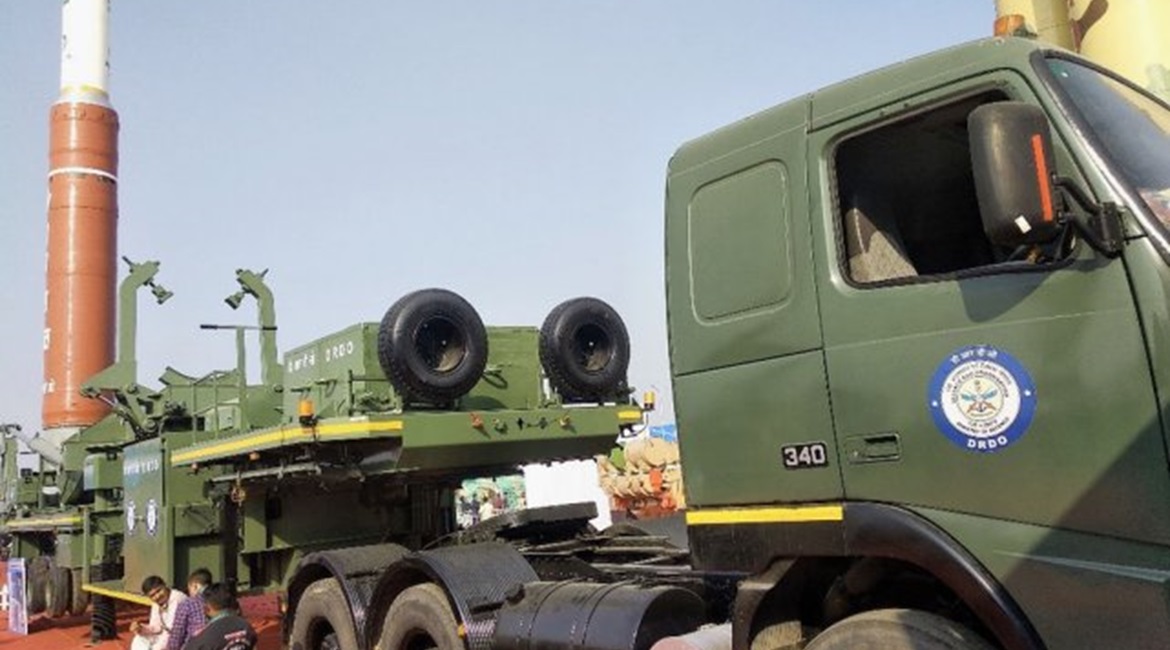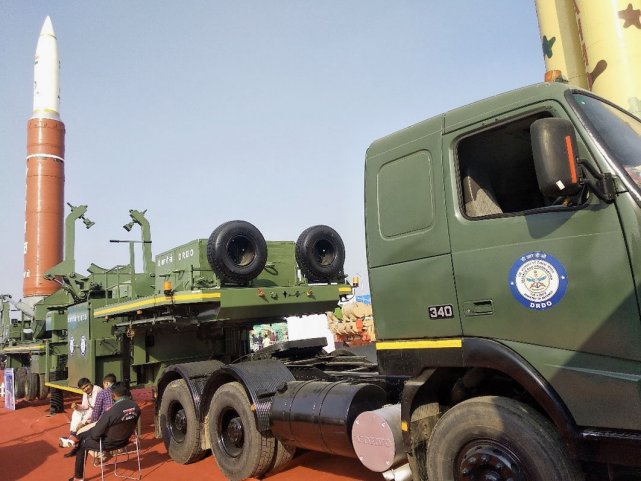
Officials from India’s state-owned Defence Research and Development Organisation (DRDO) have said that the anti-satellite (ASAT) weapon system tested by New Delhi in March 2019 is now “ready for further limited production”.

The ASAT weapon system as displayed at the 5–9 February Defexpo 2020 exhibition in Lucknow. (Jane’s/Rahul Udoshi)
However, speaking to Jane’s at the 5–9 February Defexpo exhibition in Lucknow, the officials pointed out that any decision on the further production will have to come from the Indian government.
The ASAT weapon demonstrated its capabilities as part of ‘Mission Shakti’ when it was used to shoot down an Indian satellite. According to data provided by the DRDO, the 18.87 tonne, three-stage interceptor missile – a 1:1 scaled model of which was displayed at Defexpo 2020 – features two-stage solid-propulsion rocket motors with flexible nozzles, and a kill vehicle.
The first stage takes the missile, which is 13.164 m long and 1.4 m in diameter, to a designated altitude with an average thrust of 43.1 tonnes for a burn time of 74.8 seconds, after which the second stage ignites, providing an average thrust of 20.8 tonnes for a burn time of 37.7 seconds.
The missile uses inertial navigation with target updates for mid-course guidance and an imaging infrared seeker for terminal homing. The weapon is designed for engaging low-Earth orbit (LEO) targets travelling at a maximum velocity of 8 km/sec, within a maximum kill altitude up to 1,000 km and downrange of 700 km.
The system has five operational stages: the ground-based identification and tracking of the target, the missile launch, the separation of the head shield, the missile’s lock-on to the target, and the engagement of the target.
Looking to read the full article?
Gain unlimited access to Janes news and more...




